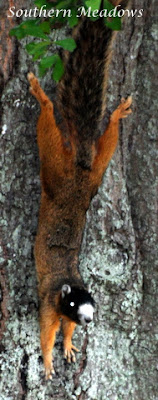Have you heard? There is a new book out on gardening for butterflies. A book that is worthy to sit on every gardener's shelf and referenced frequently.
 |
| Spicebush Swallowtail visiting butterfly weed |
Gardening for butterflies has been trending in the gardening world for many years. I have given presentations to garden clubs, master gardeners, mom's groups and other garden organization on gardening for butterflies and moths. I love educating on this topic! Gardening for butterflies is what I consider the gateway to gardening for all wildlife. If people get hooked on attracting butterflies to their garden and see all the joy and life it brings, they will soon graduate to gardening for bees and other beneficial insects.
 |
| Spring Azure |
But despite people's enthusiasm for butterflies they, like many other insects, are in peril. I have noticed in my own garden, that butterfly populations fluctuate from year to year. Some years I have an abundance of a certain species, while other years there seems to be more diversity. Mounting evidence is showing that butterflies as a whole, not just the Monarchs, have been in decline at exceptional rates.
 |
| Monarch on Ageratum |
When you consider that just one in ten butterflies makes it to adulthood, habitat loss and use of insecticides makes their survival even more challenging. To encourage gardeners to plant more to support butterflies, the Xerces Society recently published a new book
Gardening for Butterflies. My friend, Penny, gifted this book to me as an early birthday present.
The forward, written by Robert Michael Pyle of Gray's River, Washington pens that "by nurturing, enriching, and diversifying your own habitat of home, you are taking part in real butterfly conservation."
 |
| Eastern Tiger Swallowtail on Carolina Jessamine |
This comprehensive book begins with why butterflies (moths and other beneficial insects) matter, then moves on to the butterfly life cycle and different butterfly families. An entire section of the book focuses on how to design a butterfly garden, providing sample plans to put the principles into practice using regionally appropriate plants. Examples include a rain garden and upland habitat, xeriscape garden, multi-use backyard garden, meadow and roadside habitat.
 |
| Question Mark finding minerals in sandy soil in driveway |
A large part of the book consists of native plant profiles, which support butterflies. Beyond garden design, the authors discuss plant selection, installation and maintenance. I was thrilled to see an entire chapter on gardening for moths included.
 |
| Pearl Crescent on coreopsis |
And even if you don't have a place to garden at home, the book (and arguably perhaps the most important section) discusses how to get your community to incorporate gardens to support wildlife, be it businesses, college campuses, parks and greenspaces, roadsides and utility corridors, or farms and wild areas.
 |
| gray hairstreak on summersweet |
All this fabulous information is supported by outstanding photos submitted by Xerces Society members. My fellow gardening friend and native plant advocate, Penny, has several photos featured in the book, a few of which she photographed in my garden. One of the photos is of me in front of (and behind) the camera.
 |
| The Xerces Society 'Gardening for Butterflies' page 265 |
This book will benefit novice and veteran butterfly gardeners alike. Whether you are looking to start a garden that attracts these beautiful creatures or spruce up and expand your established butterfly garden there is information in here for you. Reviewing the best plants for butterfly gardens (by region), I found that there are still a few plants I need to add to our garden.
 |
| Eastern Tiger swallowtail on buttonbush |
Butterfly gardeners ARE changing the world. How much impact your garden will have to prevent butterflies from disappearing depends on what plants you incorporate in your landscape plan.










.png)
